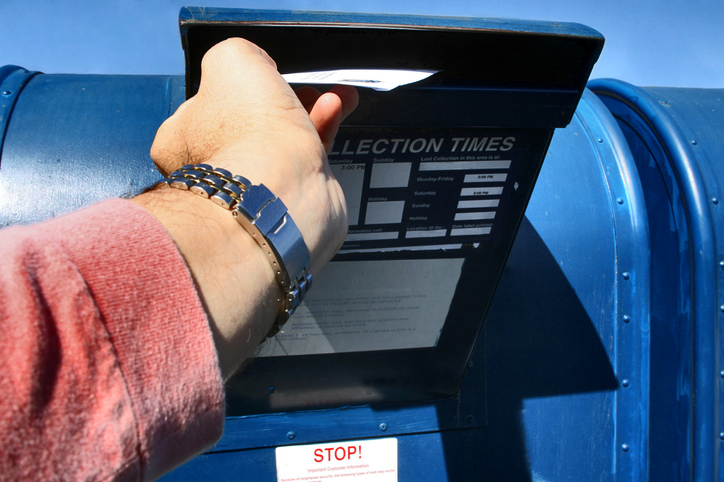
As if community banks needed another reason to encourage customers to “go digital,” i.e., use online bill pay and e-statements, here is yet another one. In our last blog we talked about this being the season to overspend…. Now, it’s also the season to be judicious about what you put in the mail… not just the USPS’s blue boxes, but that mailbox at the end of your driveway, as well.
In a press release issued just a week or so ago, and posted on POSTALTIMES.com, the USPS issued this stark warning: “Don’t use post office drop boxes on Sundays or holidays!”
If there really and truly is no such thing as bad press, I must give creds to the USPS public relations team. Over the last 6 months or so, there has been no end to the craziness at the USPS, a branch of the federal government that was once hailed as one of our most respected agencies. In fact, it was just about 6 months ago when we posted about the USPS getting into banking. Unfortunately, the USPS isn’t ready to provide banking services. In fact, the Postal Service seems unable to perform even the most basic of services; that being the safe, timely, and efficient delivery of mail.
To be fair, it’s not entirely the Postal Service’s fault. Fraudulent activity is at an all-time high, especially as it concerns the financial services industry and yes, some of that activity is mail related. One such mail related crime is check washing… something relatively new to me but, apparently, a huge problem. I found this on the United States Postal Inspection Service website:
“Have you ever sent a check that was cashed, but the recipient said it never arrived? You may be the victim of check washing. Check washing scams involve changing the payee names and often the dollar amounts on checks and fraudulently depositing them. Occasionally, these checks are stolen from mailboxes and washed in chemicals to remove the ink. Postal Inspectors recover more than $1 billion in counterfeit checks and money orders every year.”
In its press release, the USPS explains that the collection bins have become hot spots for criminals looking to steal identities. They target the blue collection boxes after the last collection of the day or during Sundays and federal holidays knowing that the volume of contents will be at its peak.
So, what should customers do? The USPS advises, "If customers simply used retail service or inside wall drop slots to send their U.S. Mail, instead of depositing it to sit outside overnight or through the weekend, blue collection boxes would not be as enticing after business hours to mail thieves for identity theft and check-washing schemes." They go onto to say that if you happen to see someone who does not look like a postal worker with both arms stuck in the dropdown chute (I’m kidding about this part) that you should report it to your local police or call postal inspectors at 877-876-2455. Good advice.
But what should community banks advise? I think they should get this message out to their customers: Forget the mail and go digital. Mail fraud is a huge problem. Consumers reported losing more than $5.8 billion to fraud in 2021, a 70% increase over the prior year, according to the Federal Trade Commission. Almost 2.8 million people filed a fraud complaint, an annual record.
Why should your customers risk having their personal information stolen or becoming a victim of check washing when every banking service they could possibly want – from depositing checks and transferring funds to paying bills quickly and securely — can be accessed through your website or via your mobile app? Seems pretty simple, and compelling, to me.
About Bank Marketing Center
Here at BankMarketingCenter.com, our goal is to help you with that topical, compelling communication with customers; the messaging — developed by banking industry marketing professionals, well trained in the thinking behind effective marketing communication — that will help you build trust, relationships, and revenue. In short, build your brand. Like these International Fraud Awareness Week campaigns, for instance, which you'll find in our portal and will help you get the message out to your customers quickly and easily.
.png) To view our marketing creative, both print and digital – ranging from product and brand ads to social media and in branch signage – visit bankmarketingcenter.com. You can also contact me directly by phone at 678-528-6688 or via email at nreynolds@bankmarketingcenter.com. As always, I would love to hear your thoughts on this subject. #bankmarketing #communitybankmarketing
To view our marketing creative, both print and digital – ranging from product and brand ads to social media and in branch signage – visit bankmarketingcenter.com. You can also contact me directly by phone at 678-528-6688 or via email at nreynolds@bankmarketingcenter.com. As always, I would love to hear your thoughts on this subject. #bankmarketing #communitybankmarketing